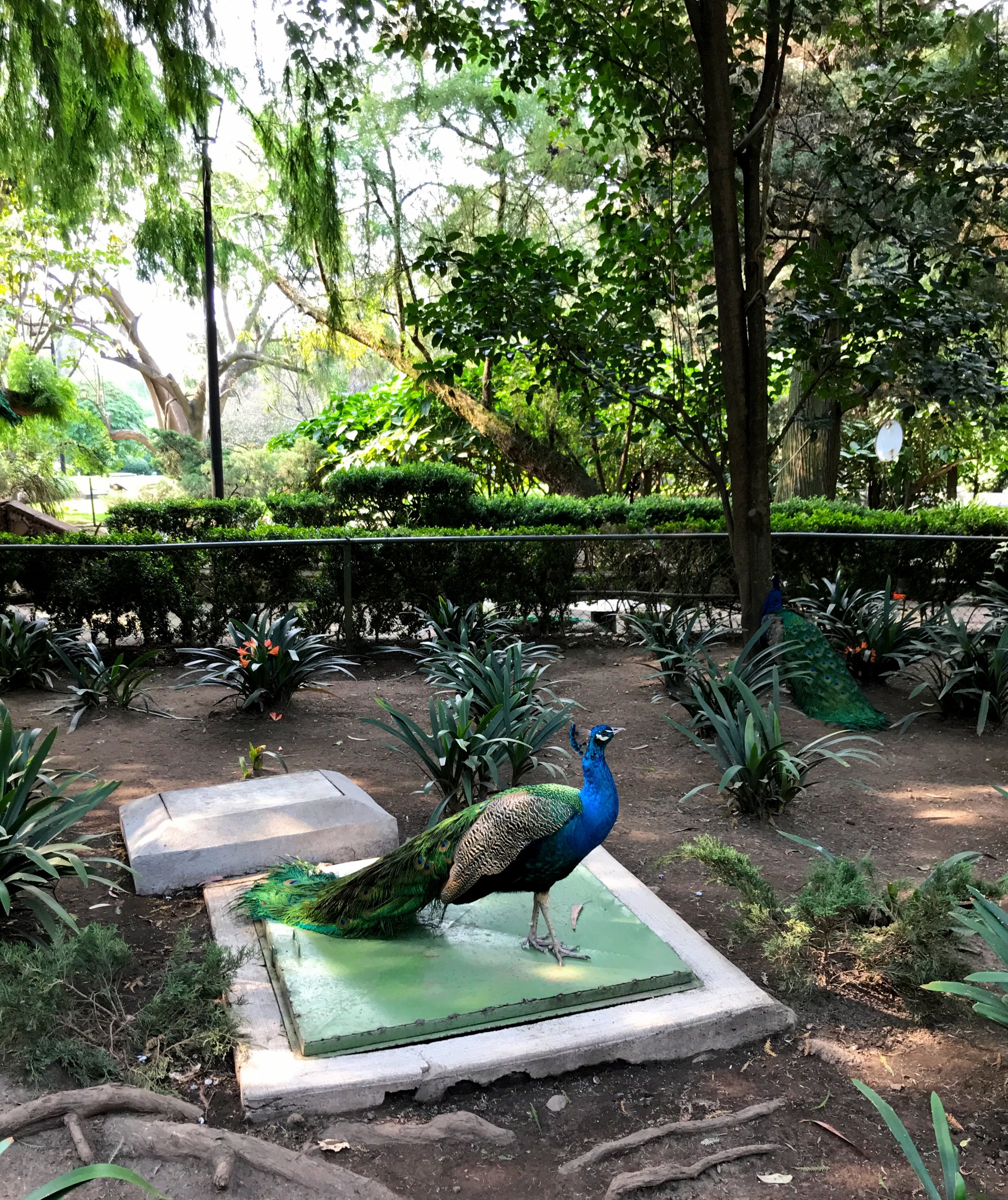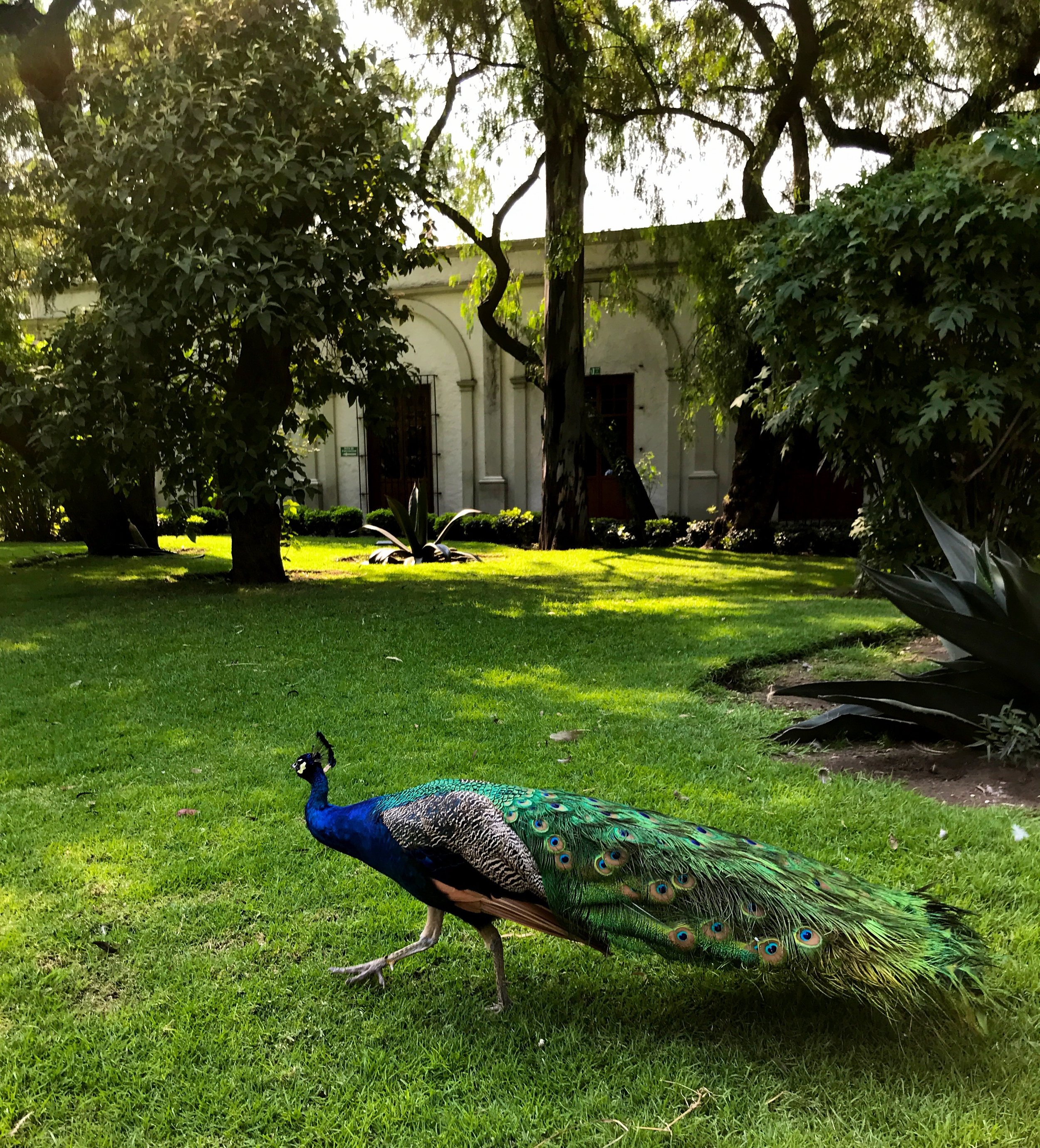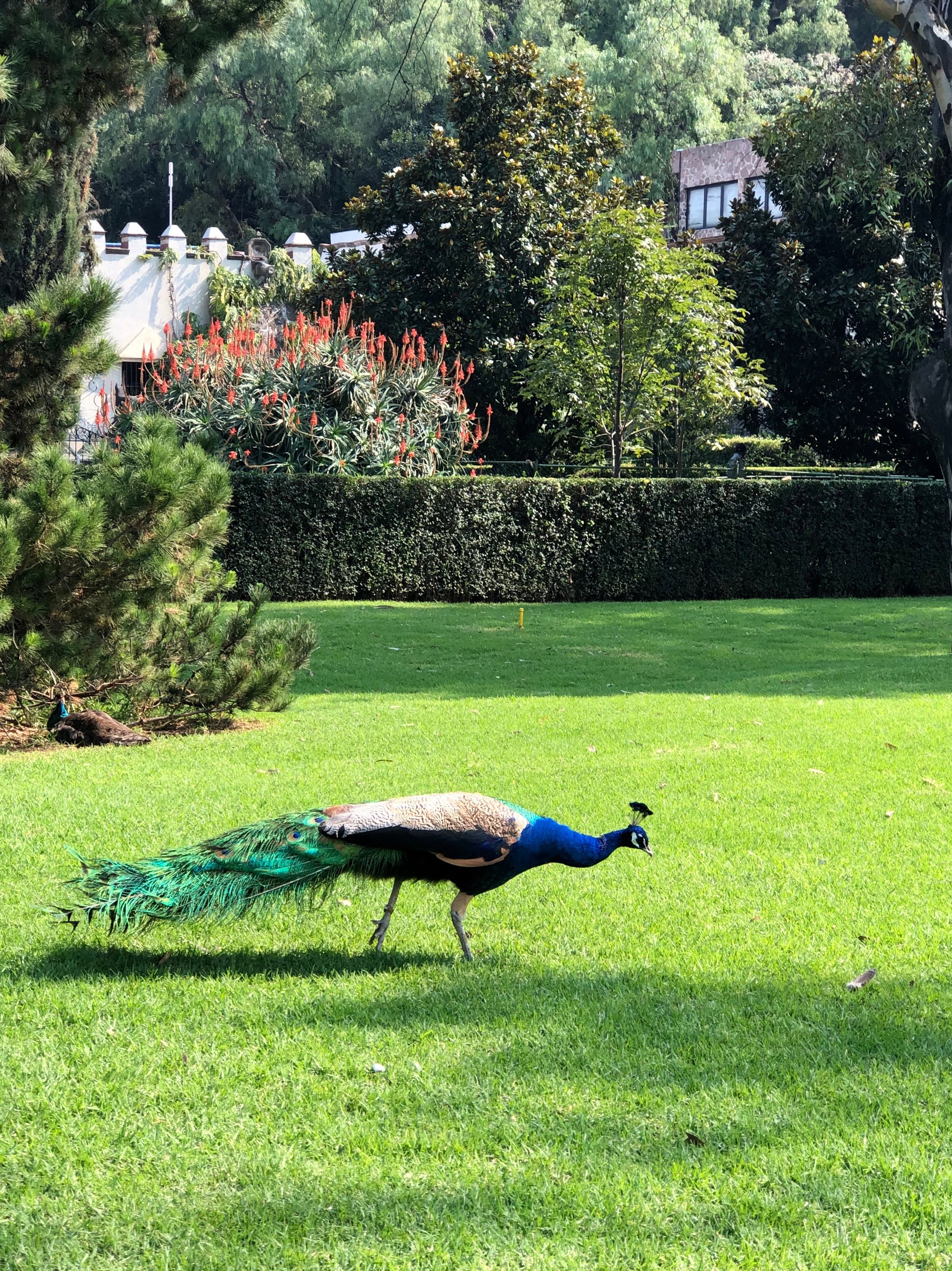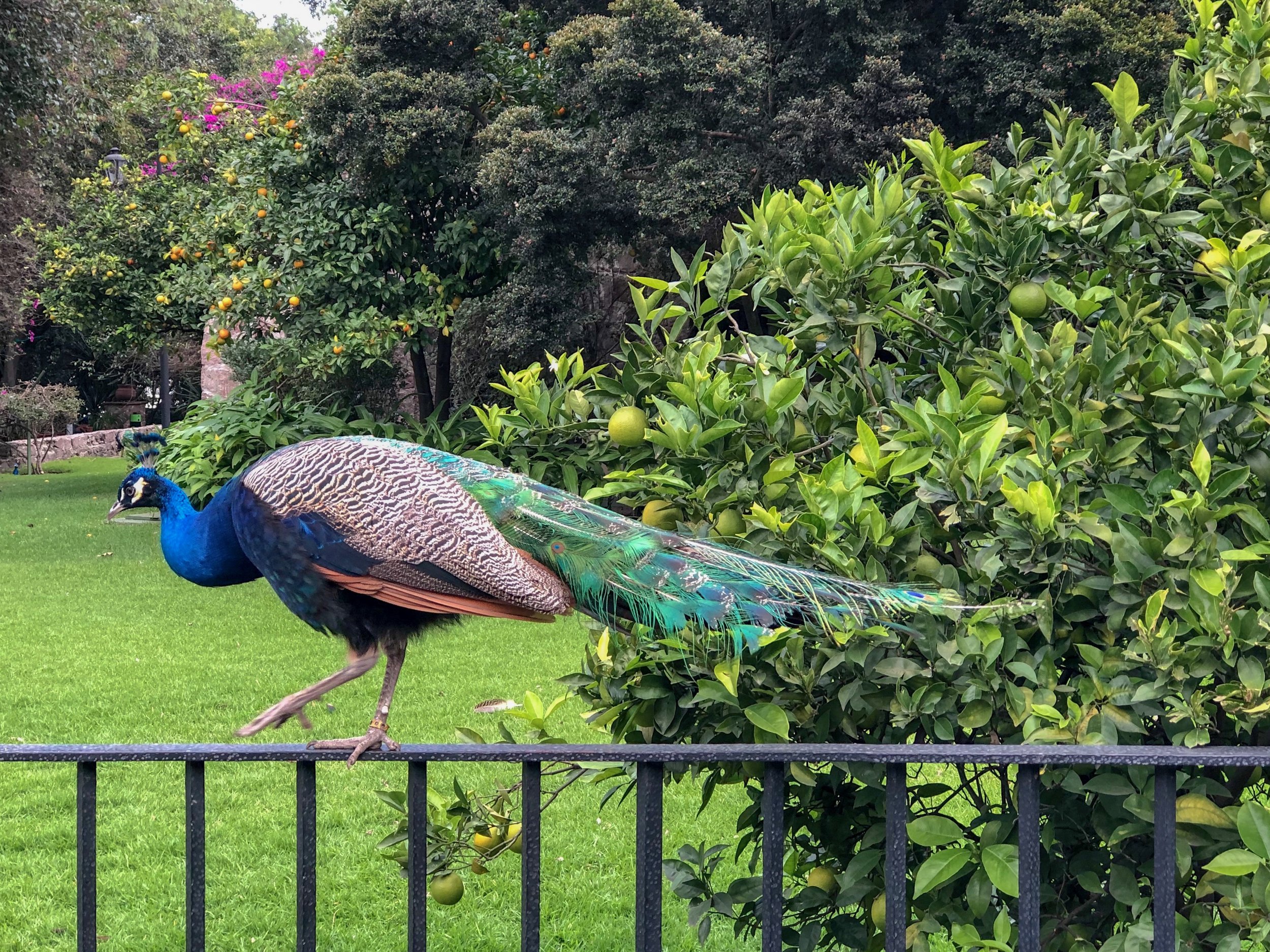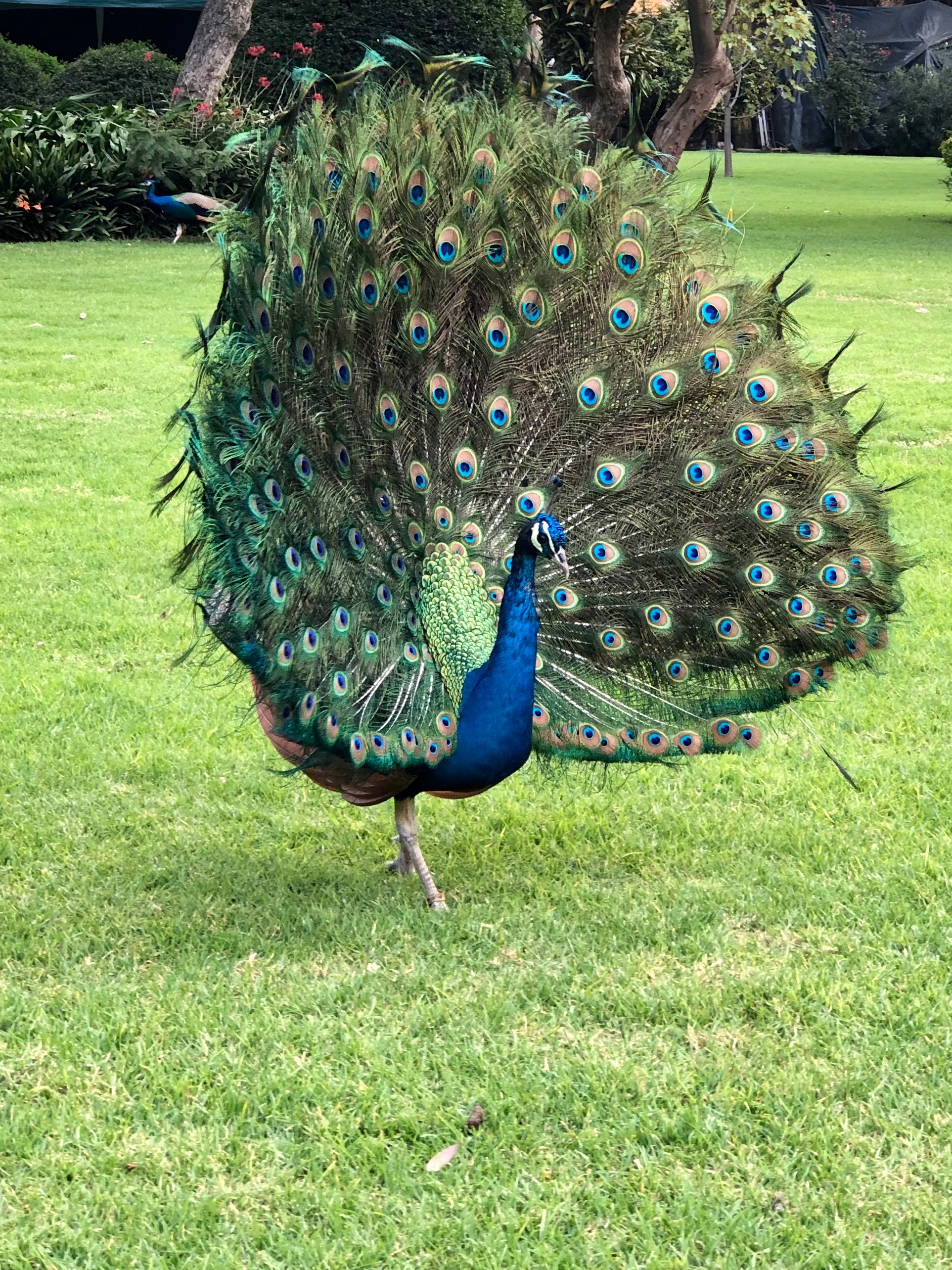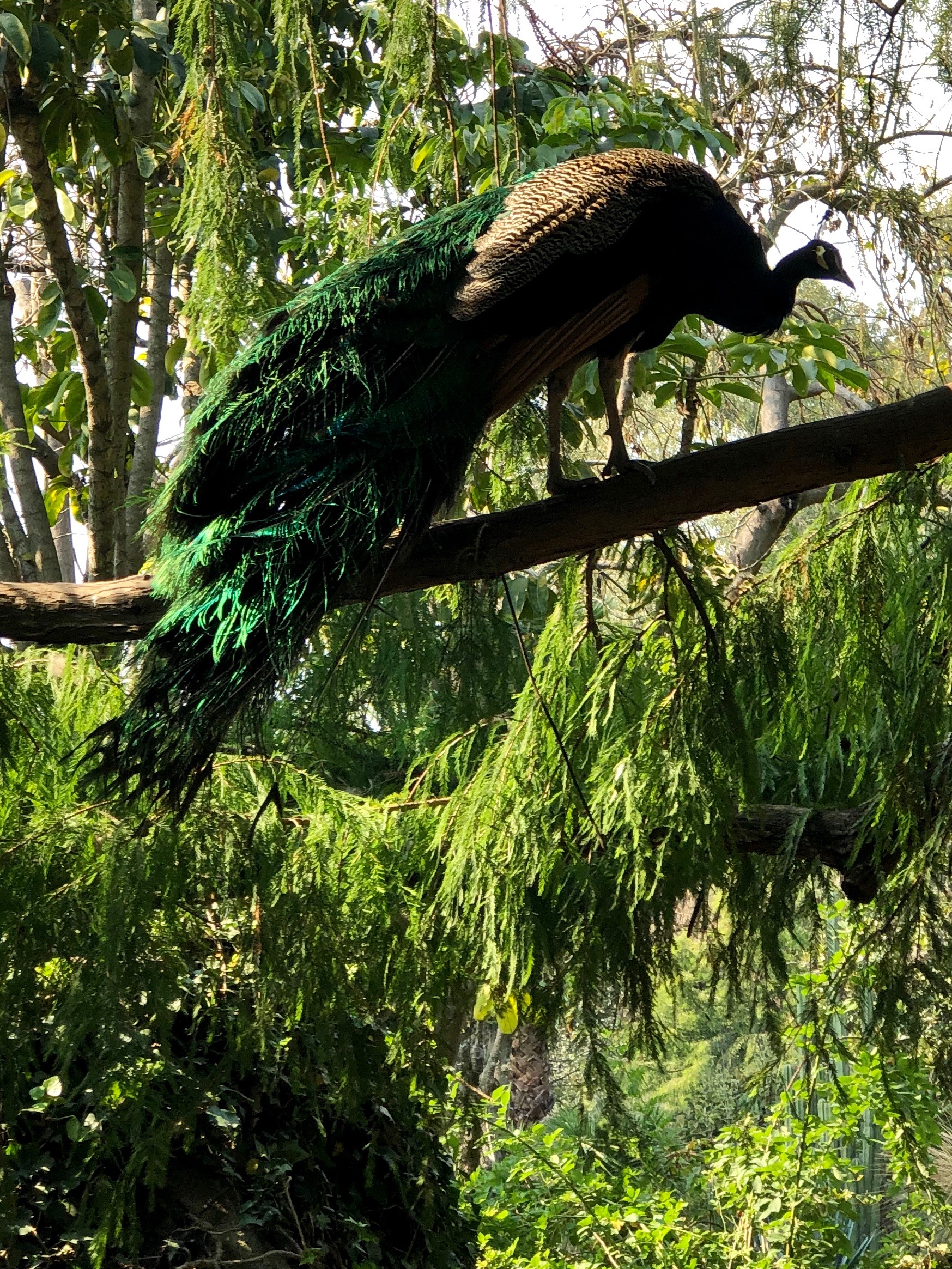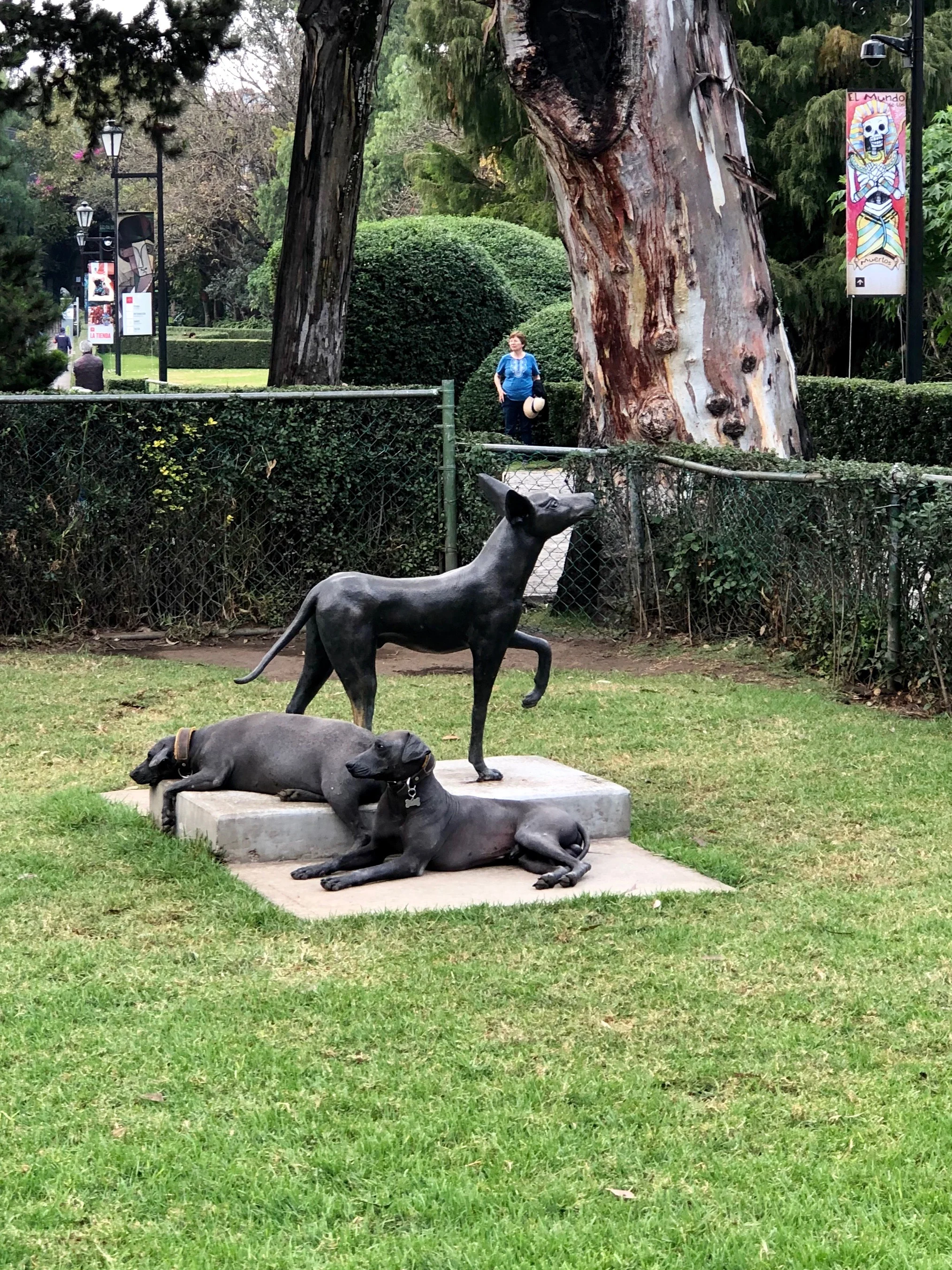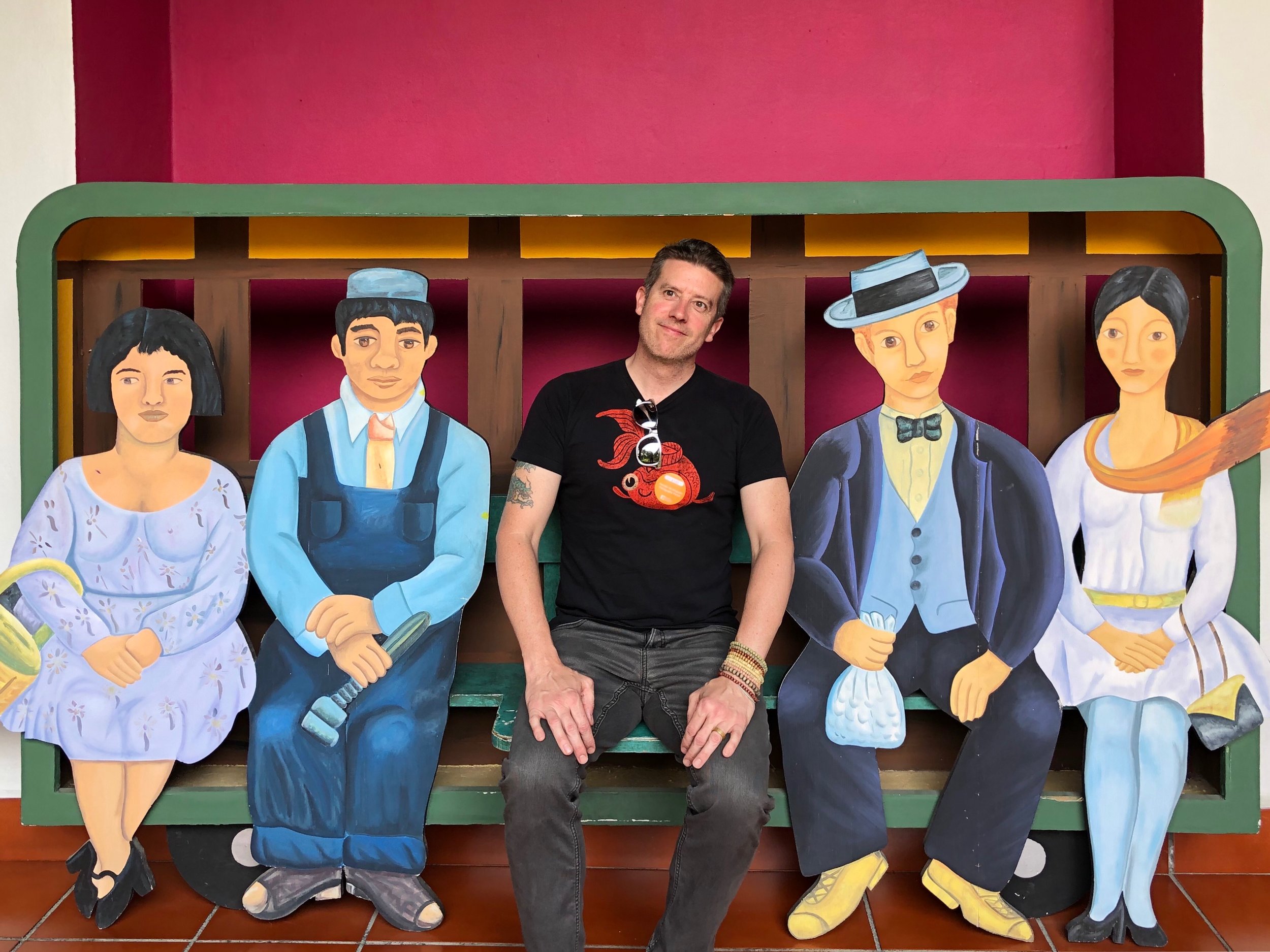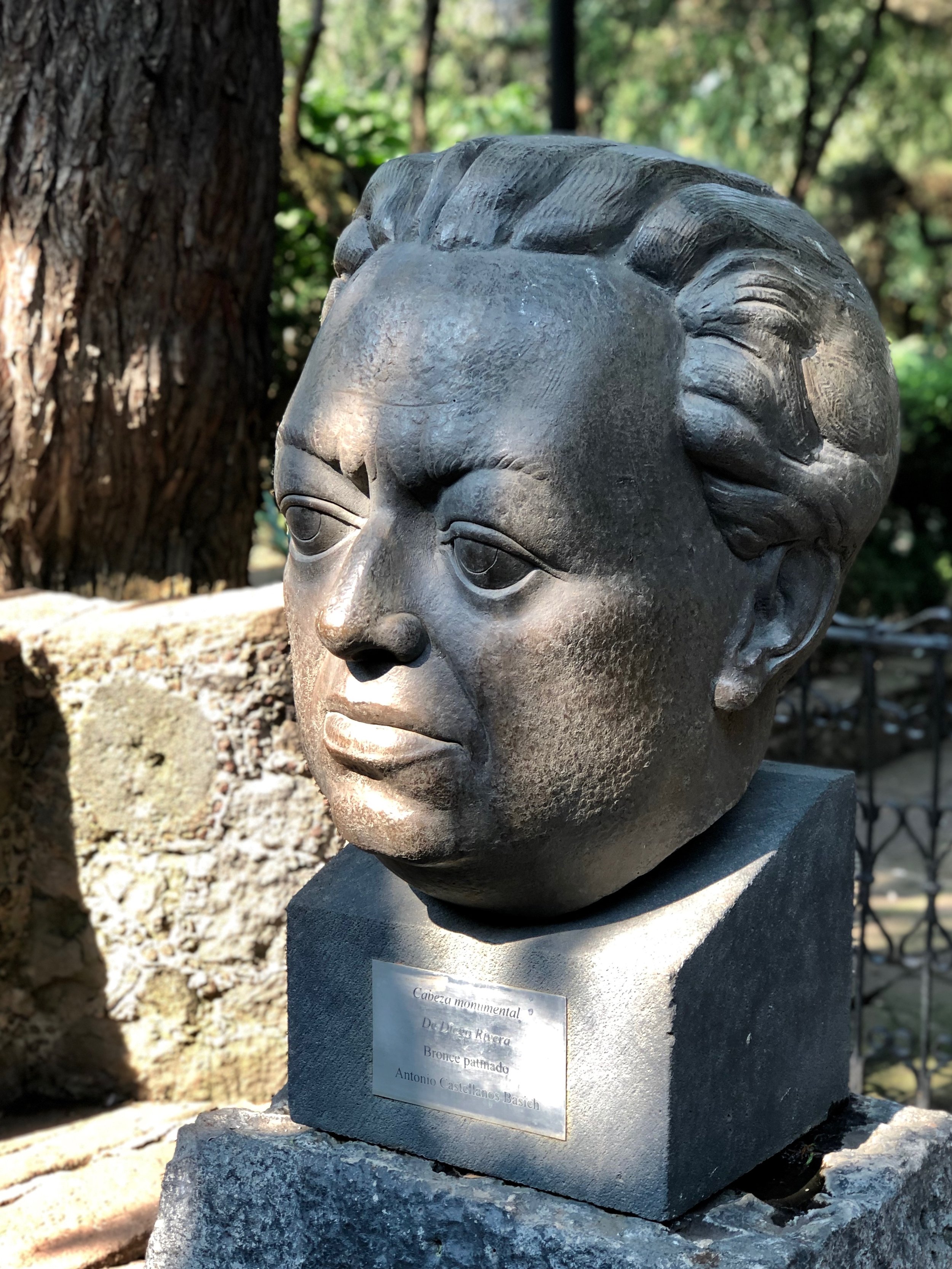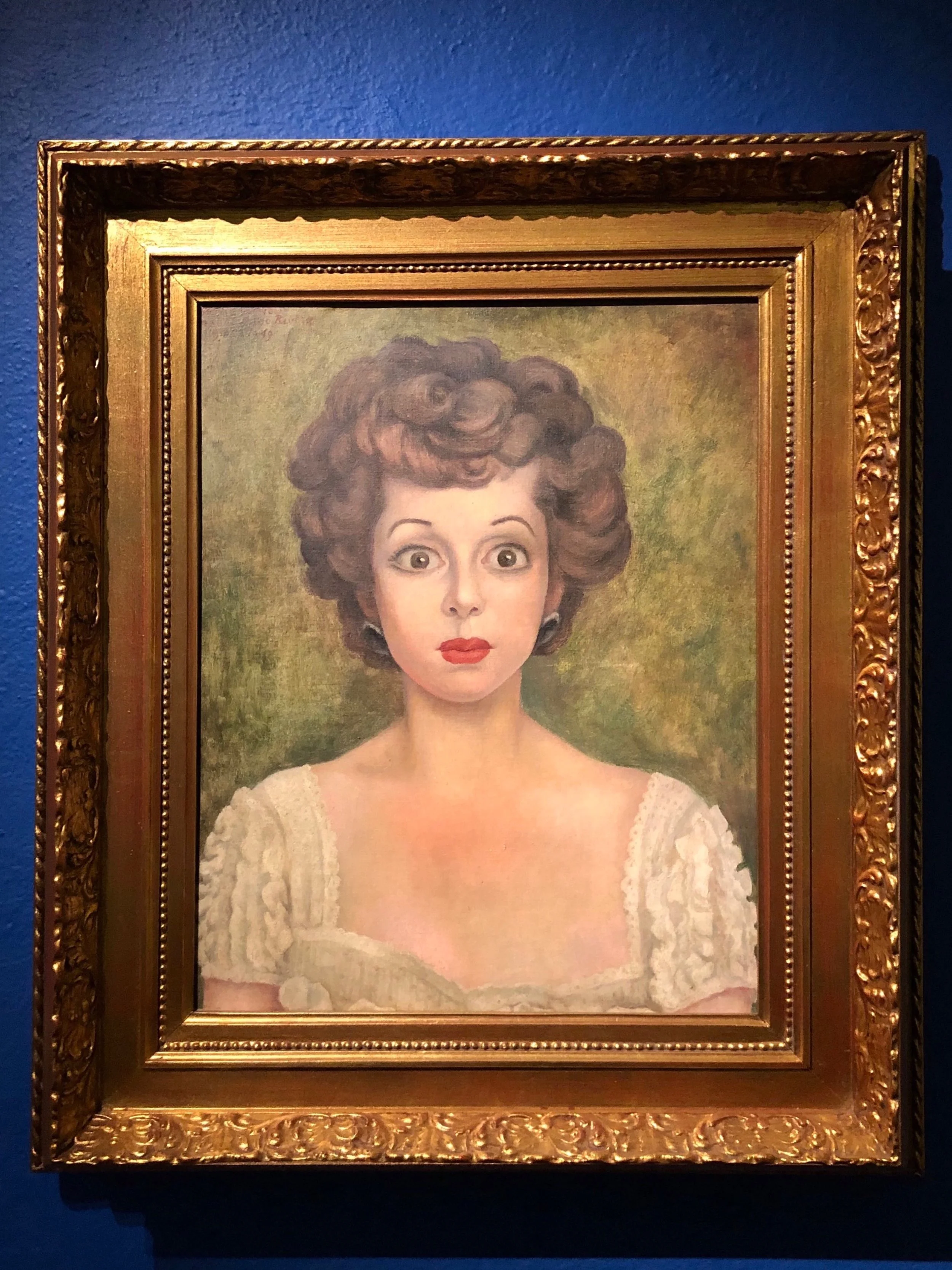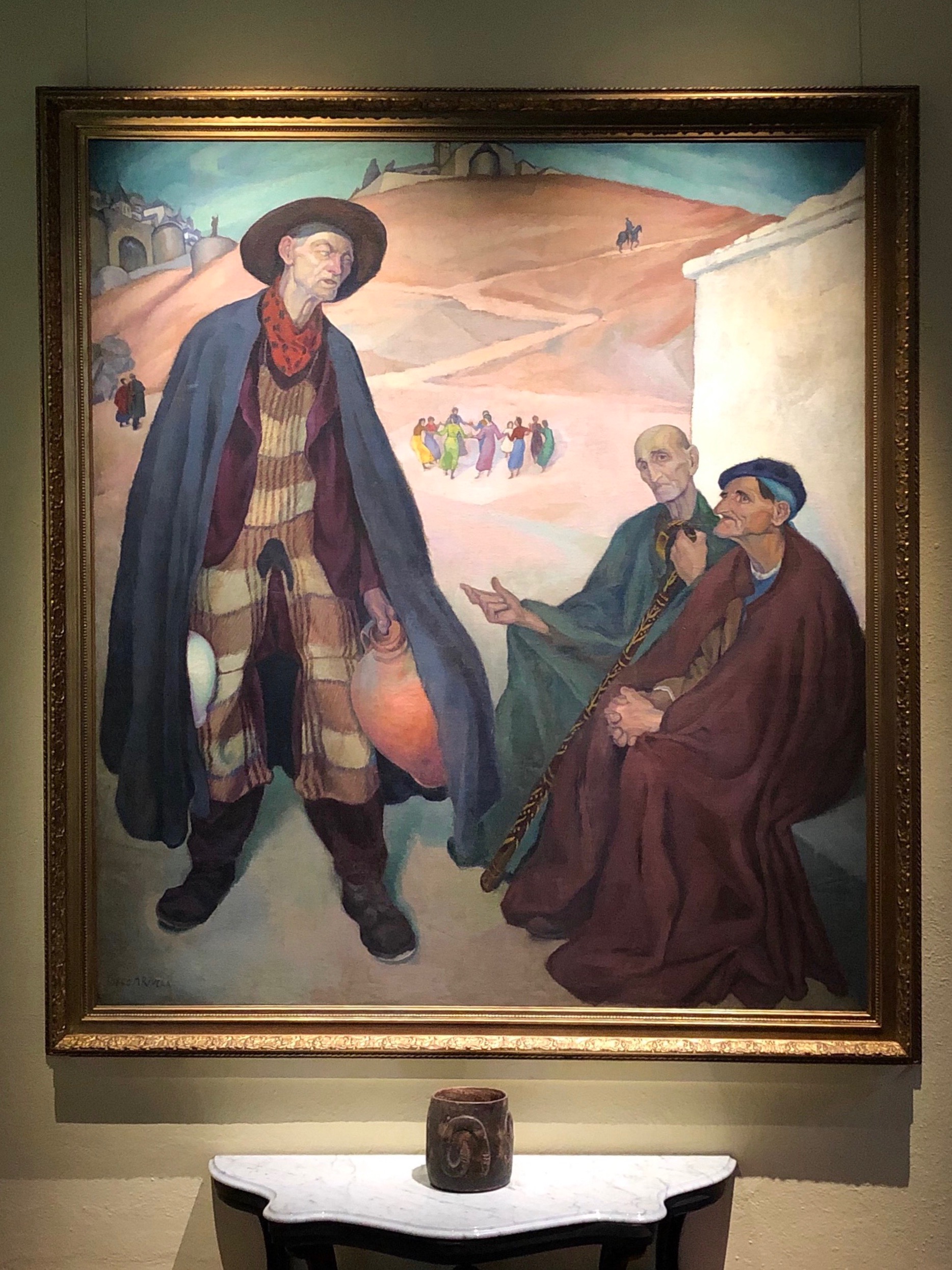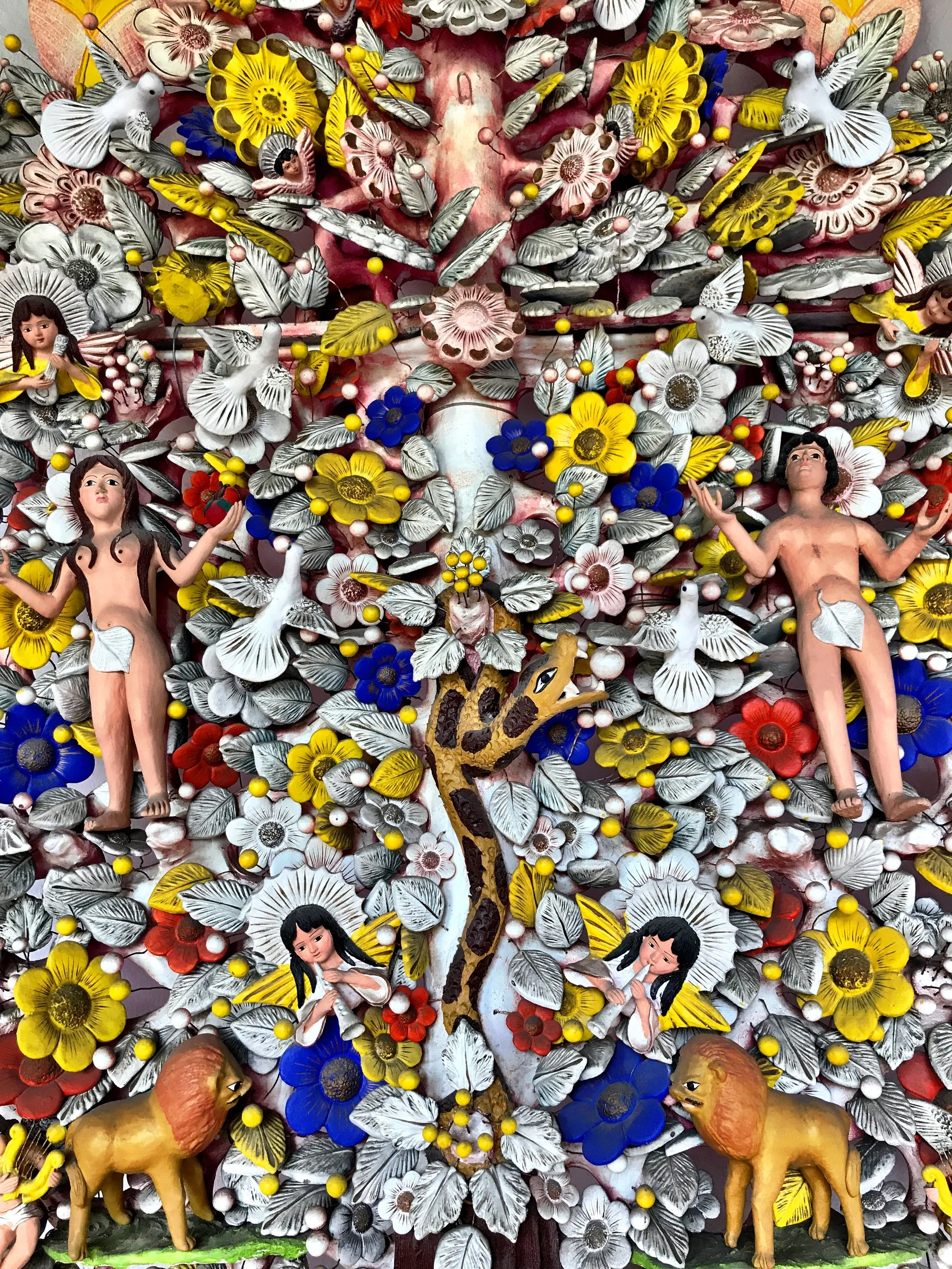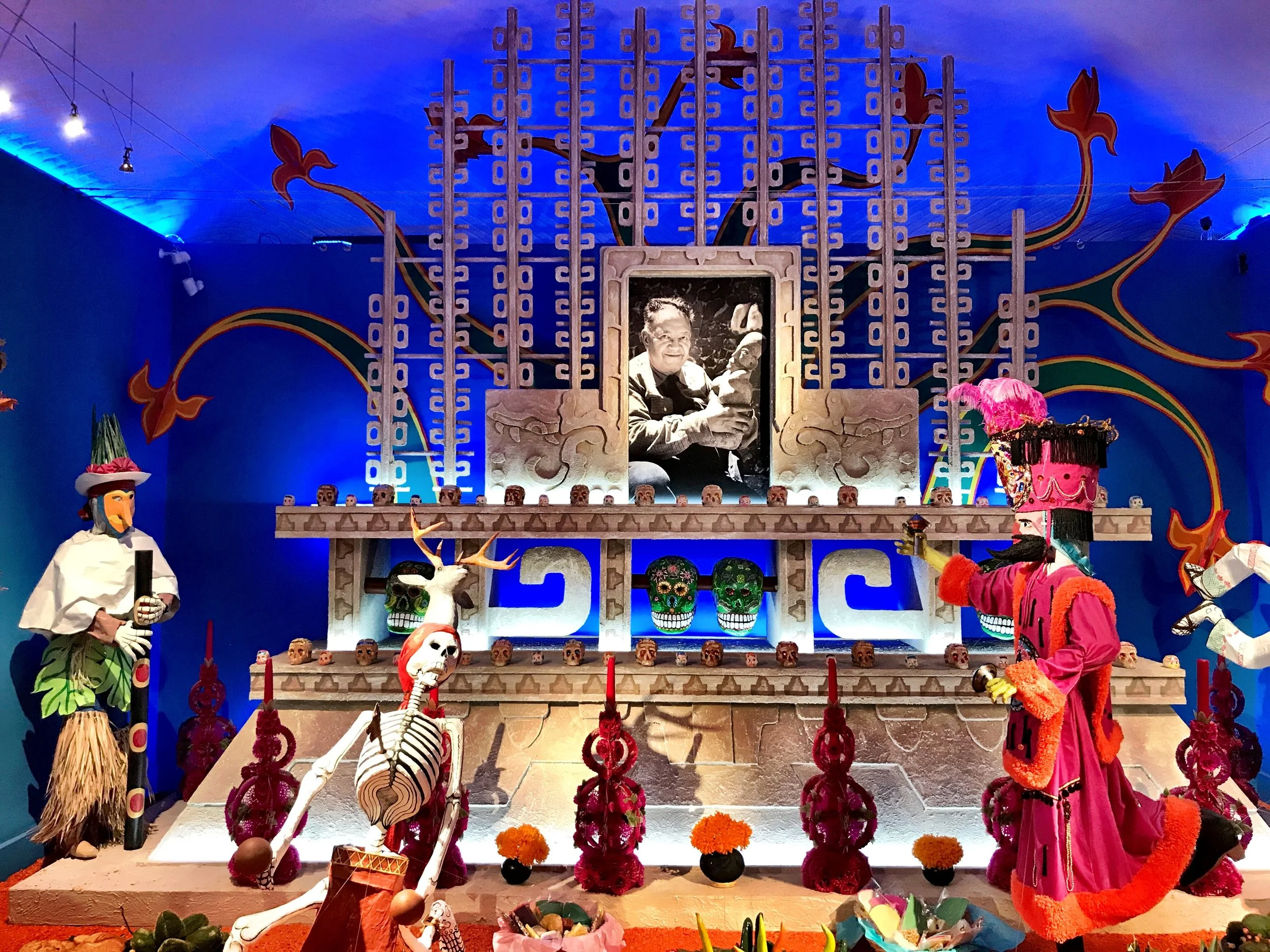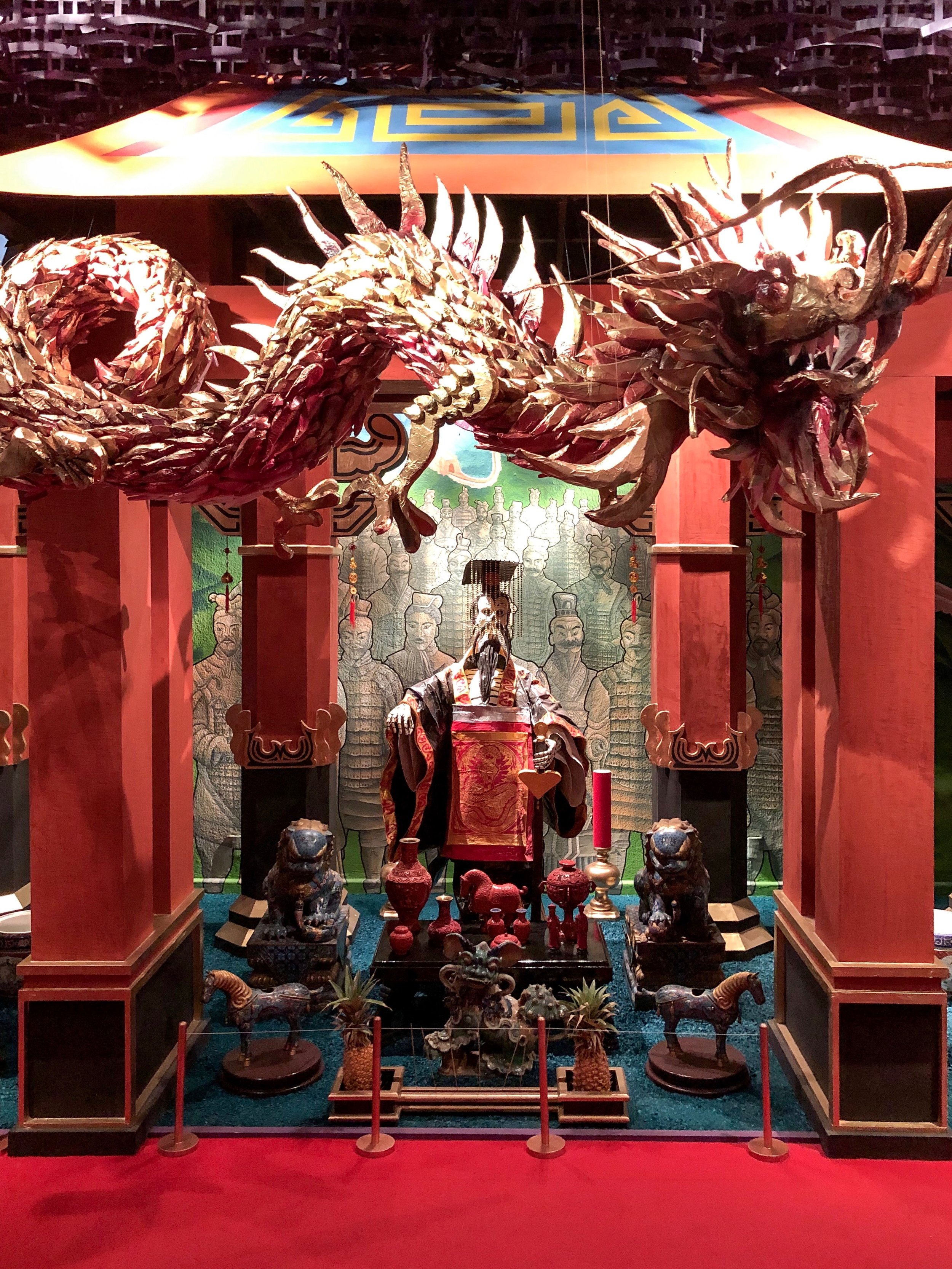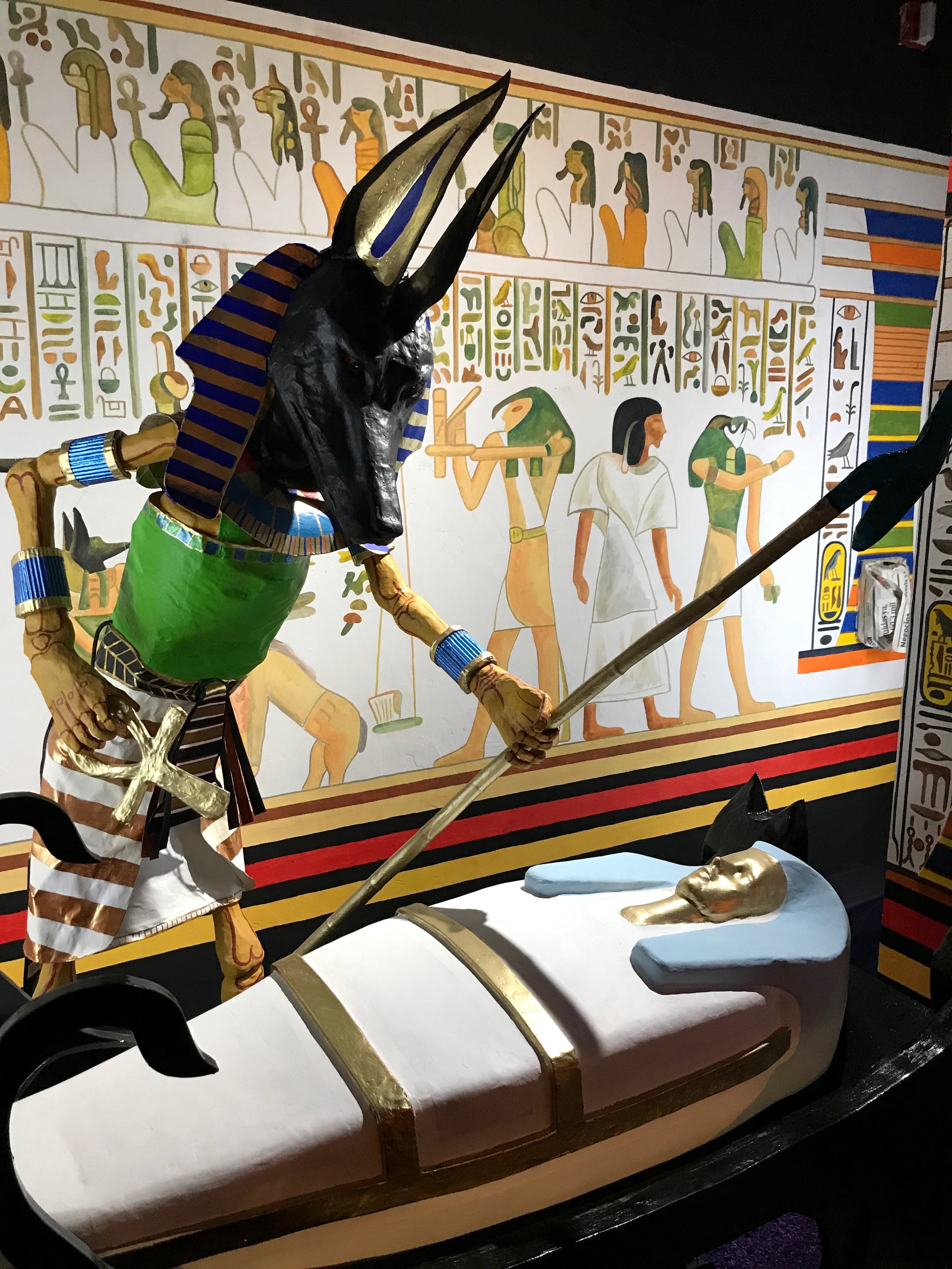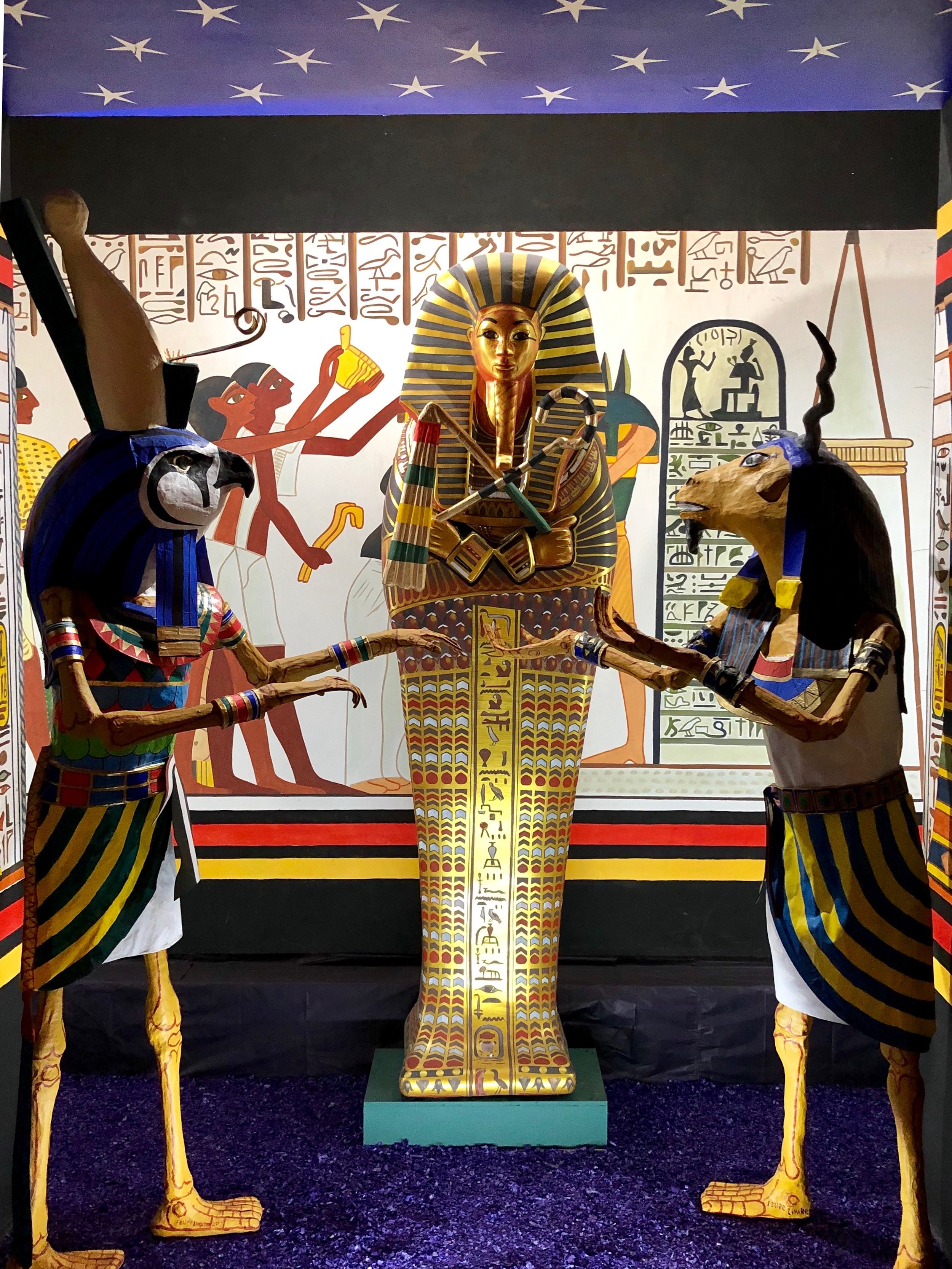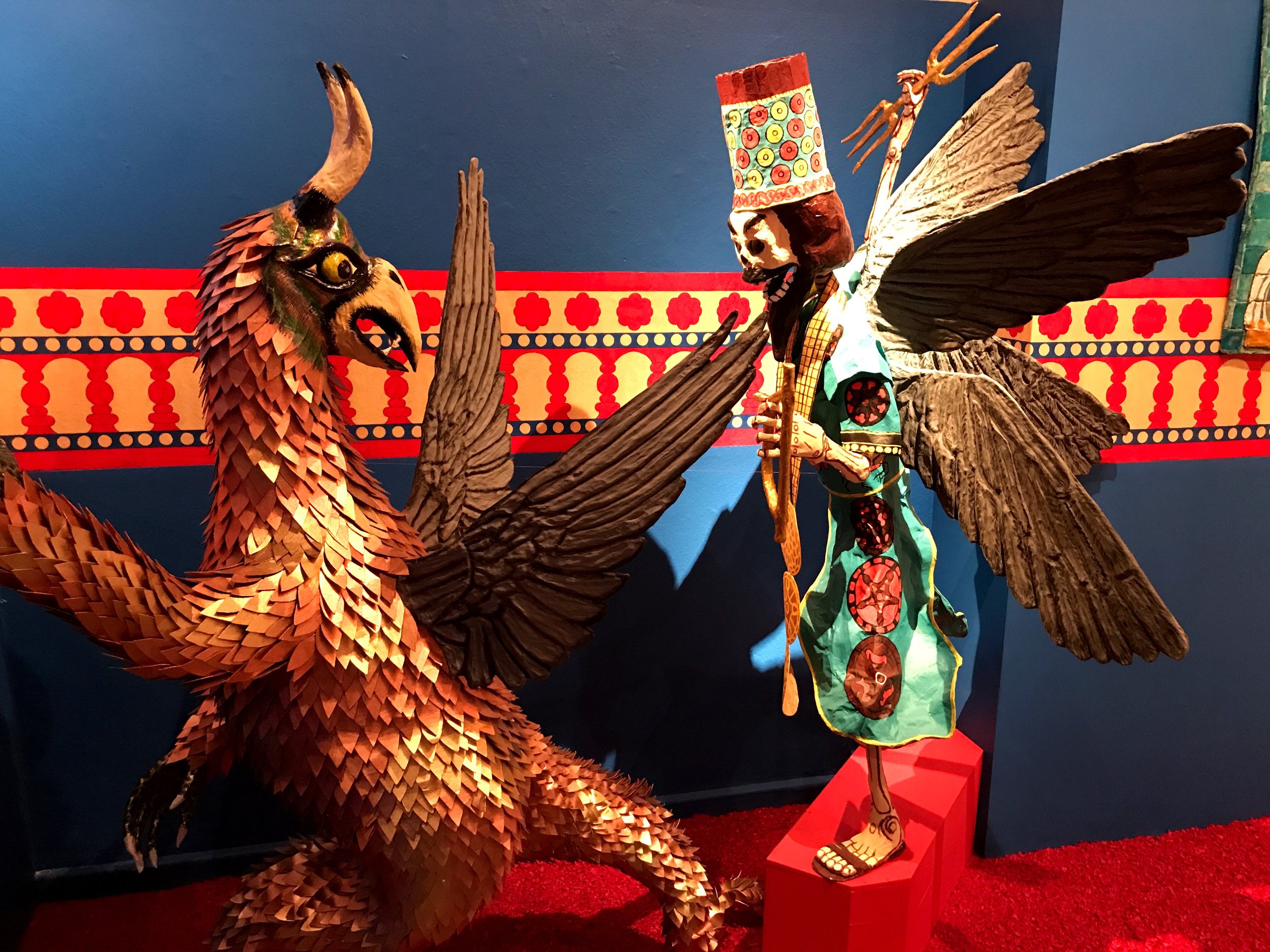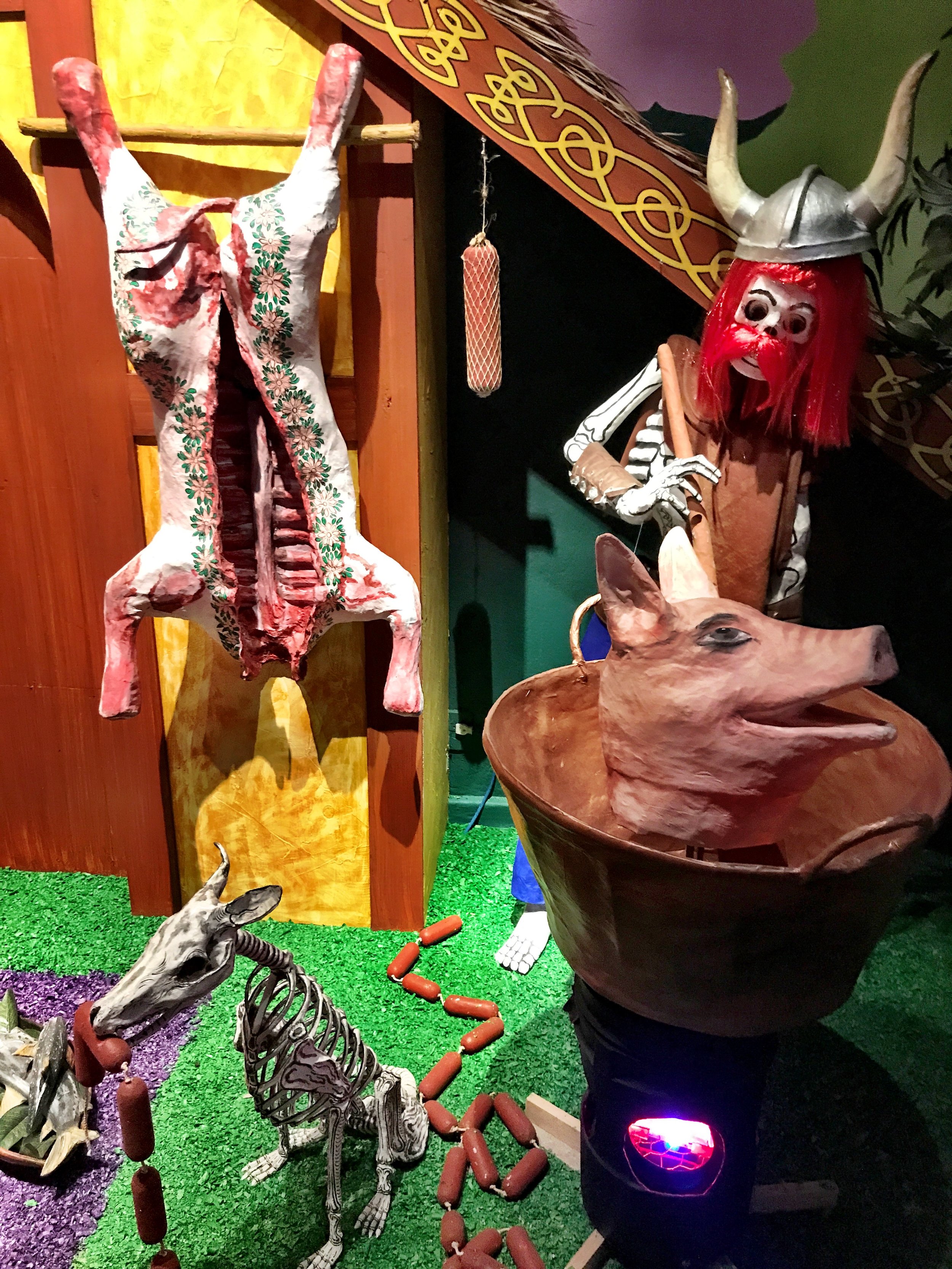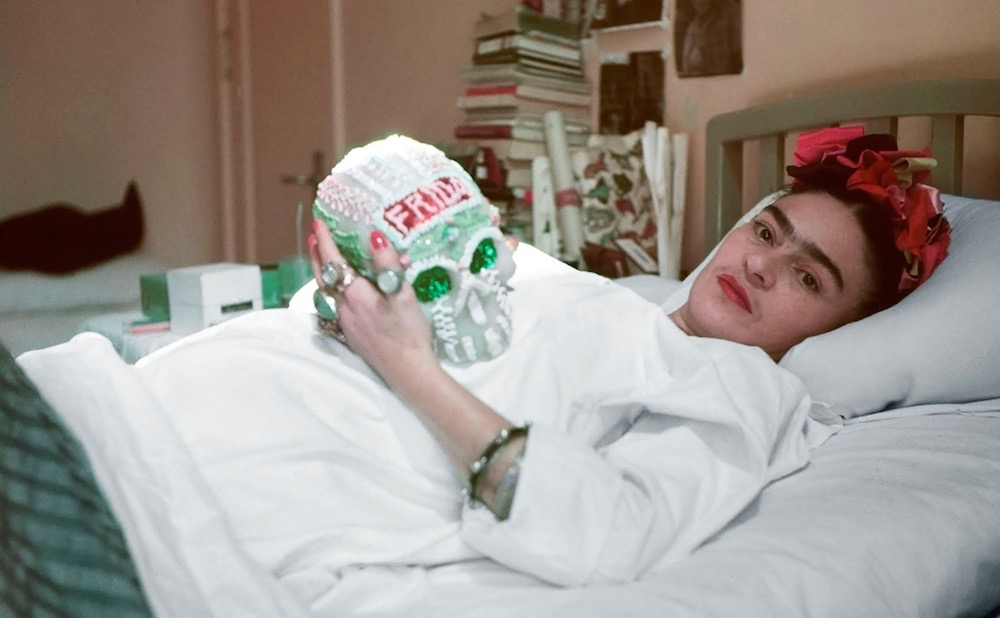The legacy of Diego Rivera and Frida Kahlo remains alive in this hacienda that’s as pretty as a peacock — which, incidentally, is overrun by them.
The Museo Dolores Olmedo hacienda is as pretty as the peacocks that roam its grounds
I had read that Mexico City is sprawling, but you don’t truly begin to understand this until you’re actually there. And although Uber is a cheap mode of transportation, our advice for exploring CDMX and its many sights is to plan your days according to mayoralities, or municipalities. Since Xochimilco was the farthest destination on our itinerary, we put a day aside to experience the canals and visit the Museo Dolores Olmedo located nearby.
“Peacocks strut about the lawn, perch on branches and sit in rows like sentinels on the hacienda’s rooftop.
We were fortunate enough to see a few of the males fan their shimmering iridescent plumage in the hopes of getting lucky. ”
The original structure dates back to the 1500s
Often overlooked by tourists, the estate was once owned by philanthropist and self-made businesswoman Dolores Olmedo Patiño. Known as Lola to her friends, Olmedo purchased the 16th century colonial hacienda in 1962 and resided there until her death in 2002. It’s worth noting that the five-building complex contains the largest private collection of works by Diego Rivera.
A statue of Doña Lola, patroness of the arts, with one of her beloved Xolo dogs
Olmedo met Rivera when she was 17 and he was in his 40s, when she accompanied her mother, a school teacher, to the Ministry of Education, where Rivera was working on murals in the building. Rivera asked Olmedo’s mother to be allowed to make some drawings of Dolores.
Olmedo amassed the largest private collection of Rivera’s works
“My mother gave her permission without knowing I would pose nude. I never told her about it. It was like magic watching how such beautiful shapes came forth from his tiny hands and how, without lifting the pencil from the paper, he could draw such long, smooth lines. The time went by without my noticing it while I posed.” –Dolores Olmedo
That was how the unique lifelong friendship was born. Under the guidance of Rivera, Olmedo amassed a vast collection, which she donated to the people of Mexico.
Here are six reasons to add the Museo Dolores Olmedo to your Mexico City itinerary:
Don’t miss the Frida gallery at the museum — we walked past it at first and had to convince a guard to reluctantly allow us to backtrack
The Colonial kitchen is covered with hand-painted Talavera tile from Puebla, with a swallow bird motif, and was preserved from the 16th century hacienda
1. The setting itself is worth the entrance fee.
Formerly known as Hacienda La Noria, which translates to the Water Wheel Estate, the grounds are as impressive as the villa. There’s a variety of fowl, including ducks, geese and peacocks. Lots of peacocks. Peacocks strutting about the lawn. Peacocks perched on the branches of trees — who knew they could fly? Even peacocks sitting in rows like sentinels from the hacienda’s rooftop. We were fortunate enough to see a few of the males fan their shimmering iridescent plumage in the hopes of getting lucky.
The estate is surrounded by spacious gardens with a variety of native plants and flowers: dahlias, bougainvillea and colossal blue agaves. Fun fact: The potent liquor can only be categorized as tequila if it has been produced from the piña, the heart of this varietal.
Giant blue agaves
This is where tequila comes from!
2. There are some strange-looking dogs known as Xolos or Mexican hairless.
Close to the hacienda is a spacious pen, home to several bald, wrinkled, dark-skinned canines. Commonly known as the Mexican hairless, the Xoloitzcuintli, or Xolo, are descendants of a pre-Columbian breed of hairless dogs. Their name comes from Nahuatl, the language of the Aztecs and is a combination of two words: “Xolotl,” the name of the Aztec god of lightning and death, and “itzcuintli,” meaning dog. According to Aztec belief, the breed was created by Xolotl to protect the living and guide the souls of the deceased through the dangers of Mictlán, the underworld of Aztec mythology.
Doña Lola was fond of Xolo, or Mexican hairless dogs. Dante, the pup from Coco, is one of this breed
Looks like someone gave this dog a bone (IYKWIM)
Dogs carved from volcanic rock adorn the house
Believe it or not, the so-ugly-they’re-cute canines were a delicacy enjoyed by the Spanish conquistadors, who ate them to the brink of extinction.
Although the breed is revered for its loyalty and intelligence, we don’t recommend dangling your toddler over their pen, as we witnessed a family do while we were there.
Wally sitting on a bench in the style of Frida Kahlo’s painting The Bus, her recollection of the moment before her tragic accident (that’s Frida to the far right)
3. You can check out some of Frida’s artwork.
Part of the allure of the museum was to see the surrealist works of Frida Kahlo. In a separate room, located off the interior arcade of the hacienda, were several small-format works by the prominently browed artist. In life, Doña Lola had little regard for Kahlo as an artist, but purchased 25 of Kahlo’s paintings shortly after her death at Rivera’s insistence to ensure his wife’s work remained in Mexico under one roof.
One of Frida’s native Tehuana dresses looms large from a glass case in the corner.
It should be noted that Frida’s works are frequently traveling. Two of Frida’s most famous works, La Columna Rota and Self Portrait With Monkey, were absent on our visit.
The postcard-sized works we saw are suffused with symbolism. She frequently depicted suffering and loss, using her broken body in her art, having suffered from childhood polio at the age of 6, which left her a semi-invalid, exacerbated by an accident when she was 18, when a trolley car collided with the bus she was on.
Keep an eye out for peacocks in the trees!
A large bust of Diego sits in the gardens
4. The museum houses the largest collection of Diego Rivera’s art in the world.
Displayed within the cavernous rooms of the main house is a gallery displaying pieces from different periods of Rivera’s work. Arranged in chronological order, the collection starts with early works, including post-Impressionist and Cubist style paintings.
Not to be mean, but we can understand why Rivera called himself Rana-Sapo, or Frog-Toad
Cover the kiddies’ eyes! This is a portrait of the dancer Maudelle Bass Weston
Diego’s Portrait of Dolores Olmedo (La Tehuana), 1955
El Picador, a painting of a seated Spanish bullfighter, shows the influence of Diego’s time in Spain under the tutelage of one of Madrid’s leading portrait painters, Eduardo Chicharro
A guard told us we weren’t able to take photos here — until she spotted the sticker that signified we had paid extra for this privilege. We’re not sure if the same rule would have applied with the Frida collection.
If you pay a little extra, you can take pics of the artwork
Portrait of Pita Amor, 1957, the year Rivera died
In the Outskirts of Toledo (The Old Men) reflects the influence of El Greco, whose work Rivera studied while living in Spain
Prized pieces from Olmedo’s pre-Columbian collection are distributed among the museum’s rooms — a result of her relationship with Rivera, whose passion for these artifacts is as legendary as the man himself. An entire wall holds effigies known as Colima dogs, depictions of Xolos in terracotta, an essential accessory found buried in ancient tombs throughout Northwestern Mexico. As mentioned, these totems were used to protect and guide the deceased’s spirit through the dangers of Mictlán, the Realm of the Fleshless, or to continue to serve their owners in the afterlife.
Olmedo’s collection of pre-Columbian Colima dogs, which were buried with the dead to guide them on their journey in the afterlife
In a room that was once the hacienda’s chapel are preliminary concept sketches for murals that illustrate the extensive planning required for these large-scale works. A mobile fresco, Frozen Assets, which Rivera did for MoMA, the New York Museum of Modern Art, in 1931, which was his commentary on capitalism and its inequality. The skyline is composed of NYC skyscrapers, the Daily News Building, Bank of Manhattan Building, Rockefeller Building and Chrysler Building among them. A steel and glass structure filled with scores of sleeping men, or possible corpses, (the “assets”) are watched by a guard. Beneath it all is a bank vault with a man seated on a bench, waiting to examine his earnings.
Rivera was a fervent collector of ancient Mexican artifacts
Frozen Assets by Rivera, 1931
The final gallery contains a series of sunsets painted from the balcony of Olmedo’s house in Acapulco, which reminded us of Claude Monet’s Impressionist study of haystacks.
Adam and Eve are depicted on this massive Tree of Life, a common theme reflected in traditional Mexican folk art
5. You can take a tour of Mexico at the Museo de Arte Popular, or Folk Art Museum.
The gallery that houses this collection is named for the curator Fernando Gamboa. Filled with artifacts acquired by Olmedo from Mexico’s diverse regions, the folk art collection is touted as one of the most important in the world. In the 1920s, when Mexico’s roots were mostly rural, the popular arts and crafts movement became widespread, and was part of the new definition of national identity. On view are masterworks in glass, ceramic, papier-mâché, wood and tin, folk techniques passed down through generations by village craftspeople.
An ofrenda to Rivera concludes The World of the Dead exhibit
6. End your visit with whimsical ofrendas from various historical epochs.
The Day of the Dead is a popular festival for families to remember and celebrate departed ancestors, and Doña Lola was known for her elaborate ofrendas, “offerings” dedicated to the deceased. Olmedo explored new ways to incorporate the traditional with the world of contemporary art. The theme at this portion of the museum, near the entrance and gift shop, varies from year to year, and on our visit was El Mundo de Los Muertos, The World of the Dead. The exhibit takes you on a journey through the funerary legacy of civilizations throughout history: Babylonian, Egyptian, Chinese, Nordic and Mayan, complete with a priest performing a human sacrifice atop a temple.
We found ourselves comfortably spending about two and a half hours at the Museo Dolores Olmedo, delighted by the peacocks, the grounds, folk art and, of course, the works of Mexico’s most famous artist couple.
Duke enjoying the gorgeous setting of the Olmedo estate
Cost for admission is about $5, with a small additional fee for photography. The museum is free on Tuesdays, though it’s certainly worth 5 bucks not to deal with the extra crowds. –Duke
Stop by the Museo Dolores Olmedo after a morning along the Xochimilco canals
Museo Dolores Olmedo
Avenida México 5843
La Noria
16030 Ciudad de México
CDMX
Mexico







